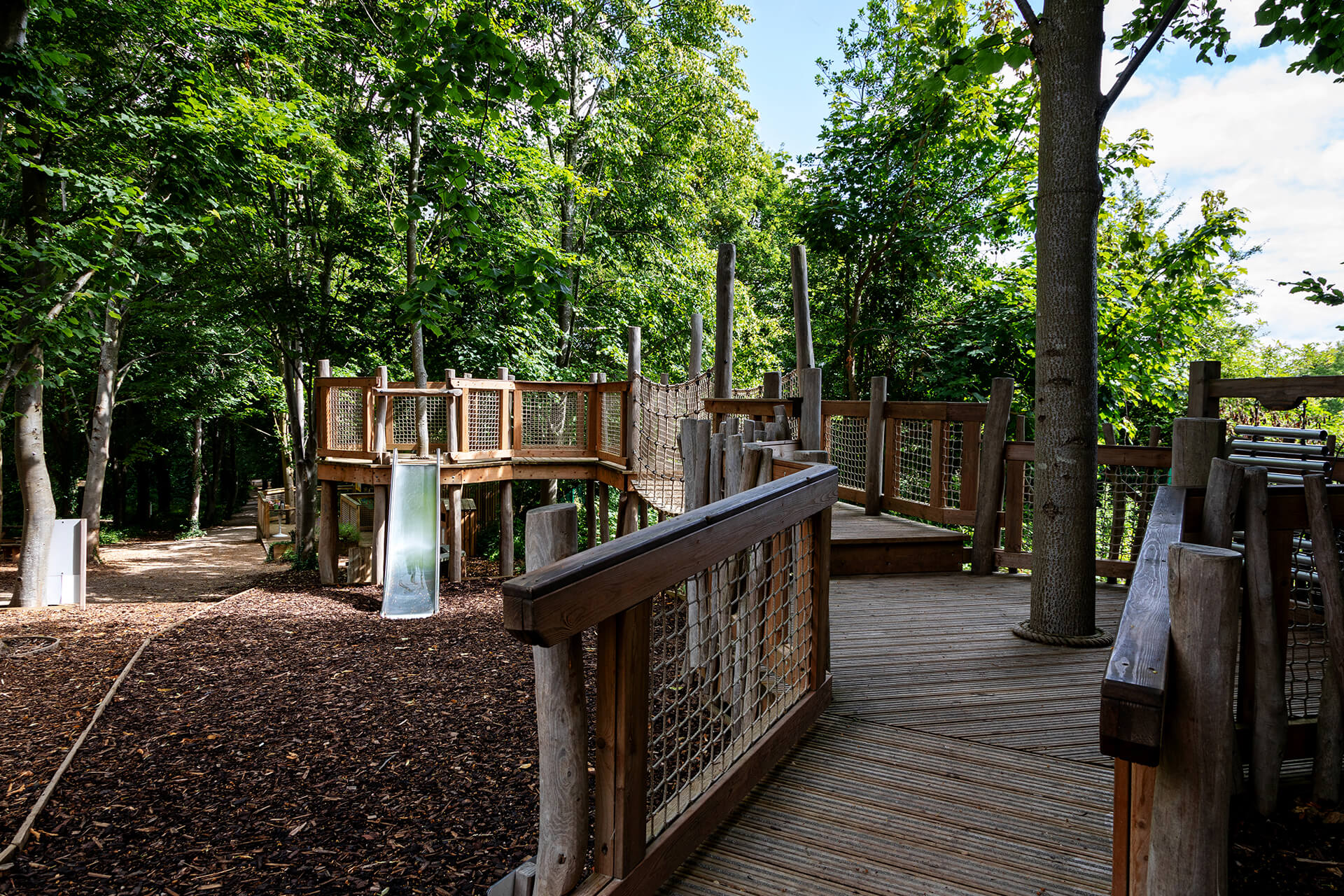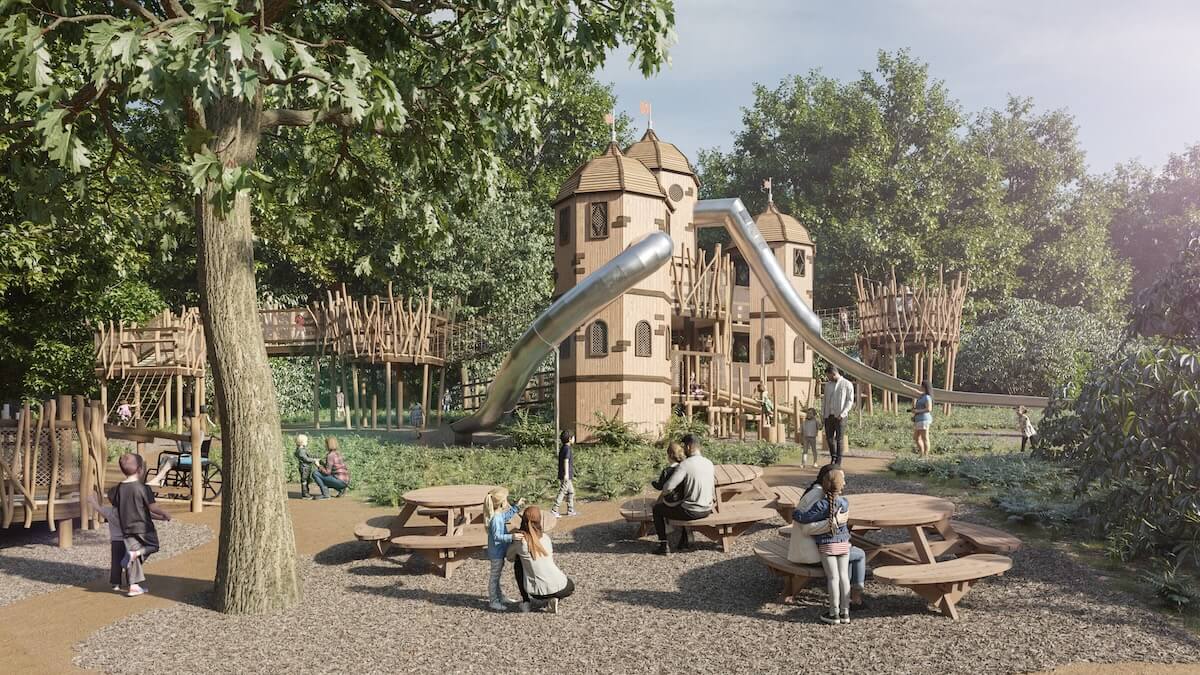Hide and Secrets
The entrance to the play is through a hidden stone arch, families are transported into a magical setting that will fire their imaginations and provide hours of outdoor fun together. The theme for the play has been created around William Cecil, the country’s first Chief Spymaster and the 1st Baron Burghley who lived at Burghley in the 1600's. The new play area is called Hide & Secrets and features a series of fun-packed play zones that lead to the Hidden Towers.
Creating the play
To cater for everyone and design in longer-term interest, we have created four distinctly different routes to access the central play towers and the slides that come from it, and the secret play within it.
The first of these is the cargo net and bridge access. On this route, you can climb up into the trees on a cargo net and run across a bridge over the pathway below.
The ground play access route, introduces a combination of log stepping stones and natural timber hurdles creating a playful ground-level trail that weaves around the play towers, linking a number of access points into the main play structures.
And the secret route (which obviously we can't tell you much about) is a wonky walkway with balance obstacles leading to the climbing route and climbing wall, that creates an adventurous access to upper levels of play.
There's also the accessible boardwalk. This uses the natural gradient of the site, to give wheelchair users access into the heart of the play reaching a height of 3m. It also acts one of the main links into the network of play walkways and bridges. The play is extended into a nest tower with a walkway. This has been designed to resemble a nest with rustic cladding approach with a firepole to take you down to the ground-level deck. The nest towers are connected via a rope bridge and then a crawl tunnel, which takes you into the cluster of play spiers, with one of the net towers featuring a giant octagonal hammock.
Toddler Play
This area is designed specifically for under fives. Inspired by the form of a nest featuring lookout decks, linked by walkways, accessed via a range of toddler-friendly decks and bridges. The adjacent seating areas allow parents and guardians to remain close at all times, whilst allowing the youngest members of the family the freedom to challenge themselves. The first deck is also wheelchair accessible with an accessible, low-level musical instrument (which actually sounds quite tuneful).
Around the site, there are plenty of picnic tables and bench seating. These are mainly located between the play areas and pathways to allow parents and children to rest between playing and enjoy a drink or a snack from the new F&B unit on site.
One of the first people into the site gives you a good tour of the play and you can see that here:
Theming
As the story of the Spymaster himself grew, you can see how it came to life in our CGI images here.
Creating interesting access routes
The land on which the play sits undulates and slopes gently downhill over the width of the site, which allows us the opportunity to play with the topography to create naturally interesting routes around the play.

At the centre of the adventure play is the play tower with three impressively tall spiers that draw inspiration from the architecture of Burghley house and share the roof detail. There are two large feature slides, with decks at heights of 4m and 6m. The drop slide firing out of the westerly tower is one of kind and is an exciting new talking point and a great challenge for any guest who visits the playground. Ground level offers accessible features in a set of wonky mirrors, a customized pairs game and speaking tubes. To add a local dimension, the icons used on each block on the pairs game are inspired by the history and stories of Burghley house.
Background

Burghley House is one of the largest 16th-century houses in the UK. It's also one of the ten treasure houses of England and a beautiful example of extravagant Elizabethan architecture.
Since opening to the public as a visitor attraction it has become a popular destination, with visitor numbers growing strongly over recent years. Not only are visitors interested in its history, heritage and the stunning Capability Brown designed landscapes, but also in its ongoing developments, which include the successful sculpture garden, to the East of the estate. It is within the edge of the sculpture garden that the development of a space for children and families to engage with the landscape through play was created.




























